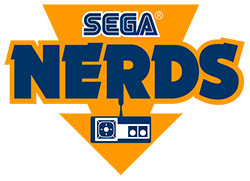
Sonic Spins: The Reel History of Sega Slot Machines
‘To be this good takes ages,’ was the carefully crafted slogan for Sega’s UK advertising campaign in the ‘90s, and the Japanese gaming powerhouse spent its early years honing its skills building slot machines. It was these early years that helped shape Sega as a company, and show them the value in providing entertainment.
Here we are going to take a closer look at the ‘reel’ history of Sega slot machines, and how this led to the company becoming one of Japan’s most famous and successful video games companies.
Service Games: The Birth of a Video Gaming Powerhouse
The story of Sega doesn’t start in Japan, but in America, with New York born businessman Martin Bromley, who went to work at his father’s coin operated amusement business called Standard Games. This gave Martin some experience of the slot machine industry that would come in handy later, but first there was World War II to get out of the way.
Bromley spent most of the war in Honolulu, Hawaii, working in the Pearl Harbor shipyard. Shortly after the war, he saw an opportunity. The United States government outlawed slot machines in 1952, and thousands of American-made slot machines were suddenly available for use outside the USA for pennies on the dollar.
Bromley seized his chance to strike it rich and began buying slots to put in the areas around American military bases in Asia, just in time for the Korean War. The company, Service Games, had offices in Hawaii, Japan and Panama, as well as in the United States. From Service Games comes the name Sega, Service Games.
As Japan Grew, So Did SEGA
As Japan’s economy slowly built, and more and more Japanese men and women had disposable income, Service Games saw an opportunity to bring the slot machines to a larger audience. Service Games began to convert the games for the Japanese market, as well as designing their own slot machines by reverse engineering some of the American imports.
Service Games even sold slots across the world, including the UK and Europe. When legislation changed in the United States, and slot machines could be operated in certain, licensed businesses, Service Games even tried to get into the American market with their old machines. They had difficulty with this, however, as the machines they had bought and continued to copy used copyrighted images. Many models used the face of Alfred E. Newman of MAD Magazine fame in their artwork, and Service Games were told that MAD Magazine would sue them for using their trademark if they sold the machines in America.
This didn’t stop the growth of the company. They continued to find a lot of success in Japan, and sold their slot machines around the world. During the Seventies, the renamed Sega could see how technology was going to change slot machines and gaming, and their early research into video gaming and programming took the company in a new direction, and to unimagined heights.
Sega’s research into video gaming for slot machines was way ahead of its time, with many of today’s slot machines, like the ones at Comeon Slots for example, using video game elements and displays to make the latest generation of slot machines.

Shedding the Past: Switching Coins for Rings
Sega began researching and developing video games technology sometime in the late 1970s. They quickly saw the opportunity that this new technology opened, and that the company could move on from engineering and crafting complicated slot machines, and streamline their products and production lines by making these new types of games that had a much wider audience.
The video games boom of the early 1980s hit, and Sega was perfectly placed to take advantage of the situation. They quickly become popular in Japan, both in homes and in arcades, but looked on as their Japanese counterpart Nintendo took the US market by storm, mostly thanks to their Italian plumber friend, Mario.
Sega searched for the answer, and found Sonic the Hedgehog and more importantly the Sega MegaDrive/Genesis system, that doubled the power of Mario’s NES, and offered gamers speed, sound and color that Nintendo, at that point, couldn’t compete with. They switch coins for rings, and the rest is history.
After decades of dominating arcades and home consoles, Sega now concentrates on games, and though they started out making machines, the game was always the focus for Sega. Though they are a very different company now, they have stuck close to their roots.





